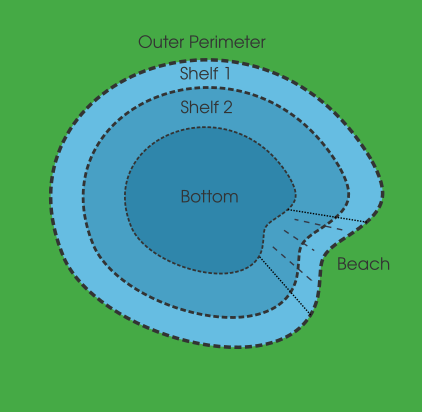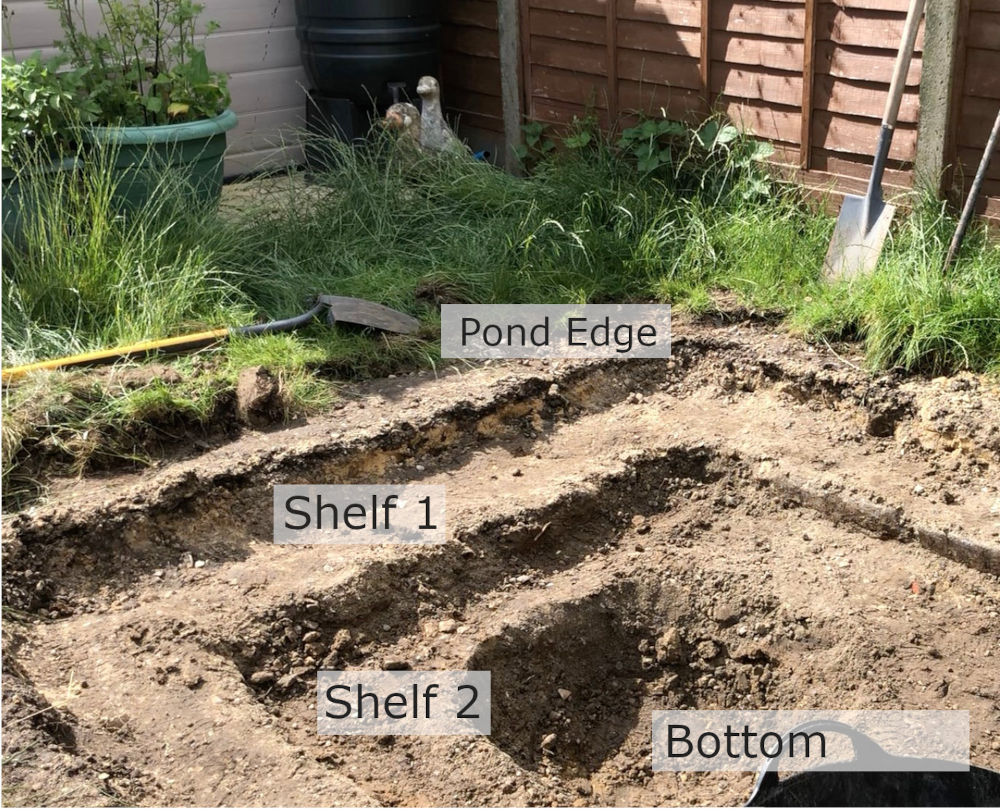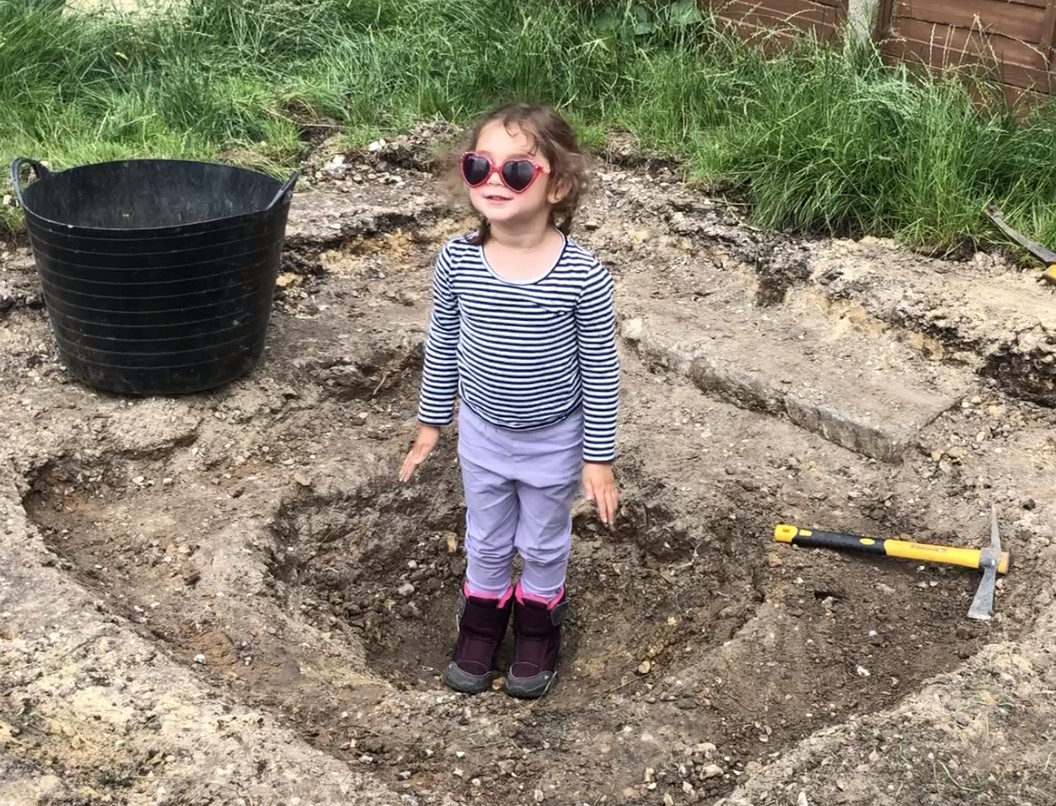Depth and Shelves
A nature pond doesn’t have to be especially deep, you can dig a pond out as shallow as 30cm deep and nature will use it. However, I think there is a good reason to dig it deeper than 30cm either in the middle or at one end. Basically, the deeper it is, the more water there is and when we have pro-longed hot spells the pond will still have water for those animals and plants that need it. During the winter months frogs seem to hide at the bottom to escape the colder spells. So a couple of reasons for digging deeper than 30cm.
Certain amphibians prefer their ponds deeper; Common Toads and Great Crested Newts. So if you want these in your pond then go deep (70cm +)
A nature pond benefits from shelves which act as steps down to the deeper part of the pond. The following illustration show a top down view of pond shelves:

Shelves are great for situating plants that live in the shallows of a pond. The are also great for situating rocks and pebbles to protect and disguise the liner and underlay. And also help avoid steep banks that can make it difficult for wildlife, especially the less agile types such as hedgehogs, to escape. So if you can factor in digging them, so much the better for the pond.
Breaking Ground
Once you have measured out and are ready to dig then it is time to start.
This is simple enough - with your spade or edging tool, push down and break the soil along the outside perimeter edge of the area you are excavating. If you are working in an area of grass or turf then you need to scalp this layer of grass and roots off first.
Dig out a few inches across the whole area.
Dig out the whole area to a approx 4 inches deep, this will be the depth of your first pond shelf and it will be the shallowest part of the pond.
Dig out a shelf or two
Generally a shelf is better dug out reasonably level, maybe not spirit-level level, but level enough to place plants and pond shelf rocks without them falling into the bottom of the pond. Take care to get rid of any sharp stones, bits of glass or broken pottery that you will often find in the soil as these can easily damage your liner.
Once you have cleared the area to the depth of about 4 inches or so, start digging out the next lower shelf. This is done by loosely marking out a hole at least 6 or so inches from the outer perimeter, then digging another 4 inch drop. Once this second shelf is completed you are ready to dig out the deepest part of the pond, the bottom of the pond.

Digging out the bottom of the pond is good because this means the majority of the digging is done. Although depending on the soil you are digging into this can be harder work if it has a clay consistency as you will almost have to chip it out. Also, all the loose soil from the shelves that you thought you had removed earlier seem to find their way into this bottom part of the pond.

On to the liner stage
One you are satisfied with the depth of the pond and feel confident you have cleared all of the sharp debris in the pond then it is time to put in the liner, well the underlay actually but it is all pretty much the same stage.